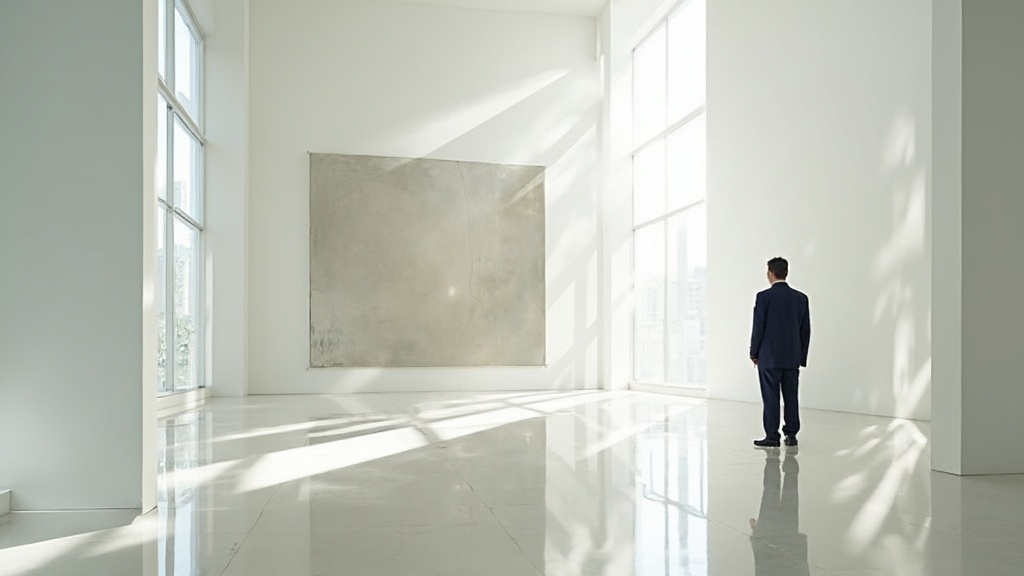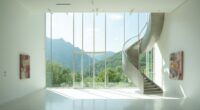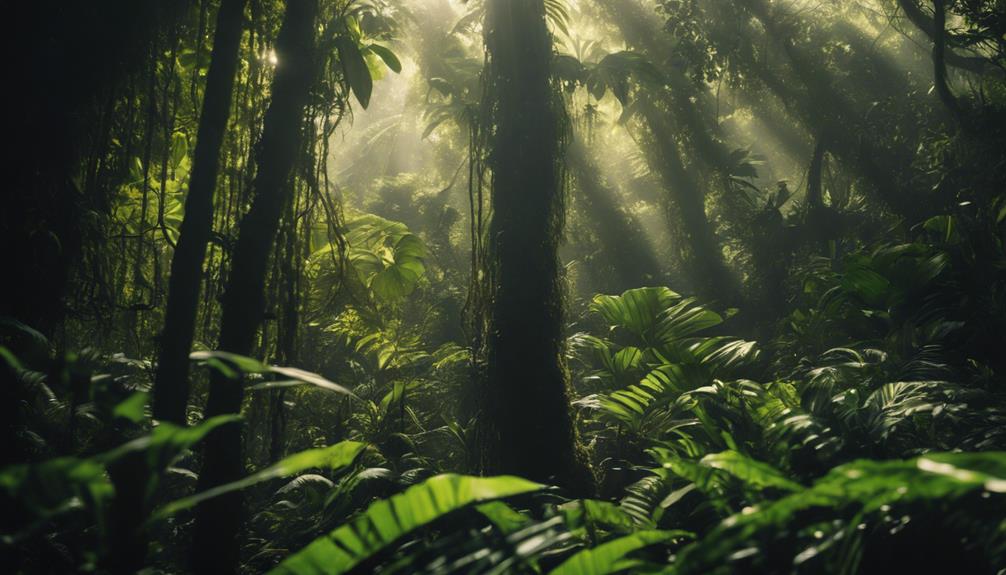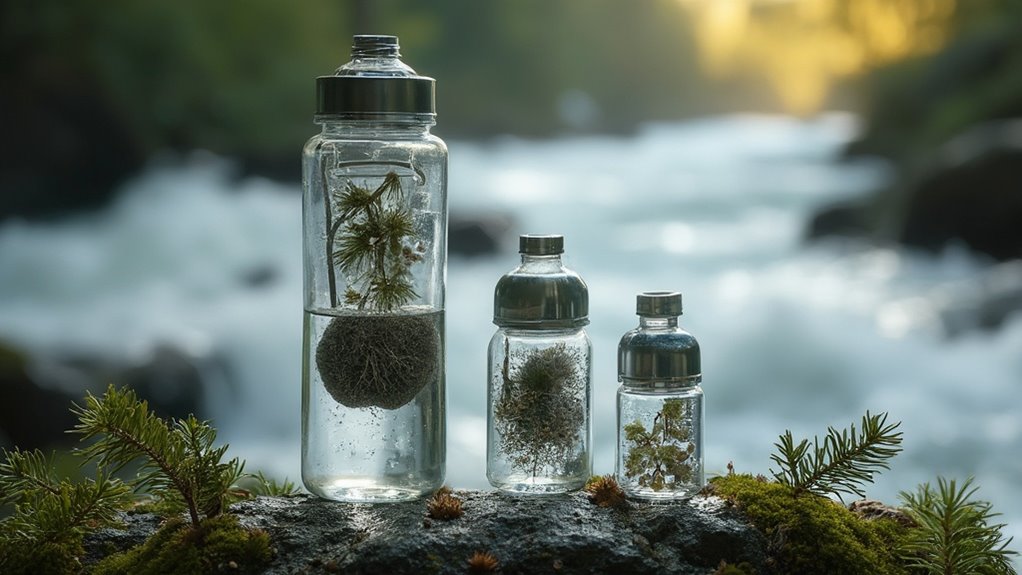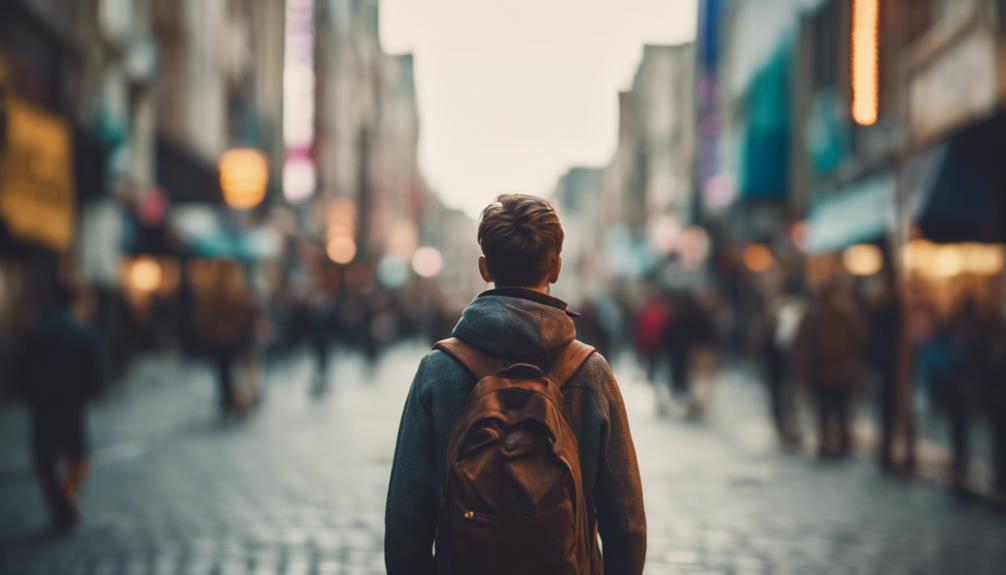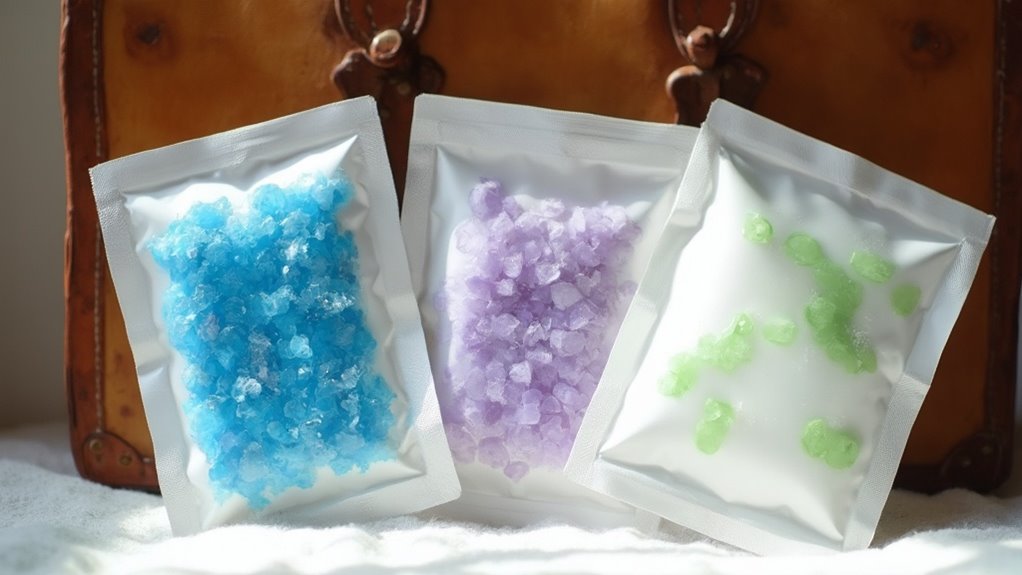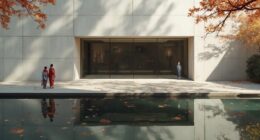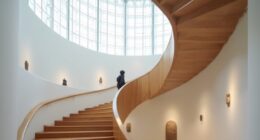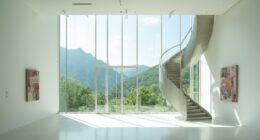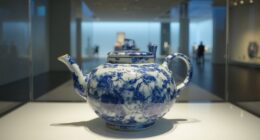Table of Contents Show
There may be products. Products are independently selected by our editors. We may earn an affiliate commission from the links with no charge to you, example: as Amazon Affiliate.
Chiba Prefecture houses several exceptional art museums showcasing diverse collections of Japanese and international artwork. The Chiba Prefectural Museum of Art features over 2,800 pieces, including Millet’s “Sheeps Grazing by a Hedge” and Kaii Higashiyama’s “Spring Snow.” These institutions blend traditional Japanese aesthetics with modern architecture, offering scenic gardens and outdoor sculptures. Beyond the galleries, visitors discover cultural events, workshops, and specialized exhibitions that reveal the region’s rich artistic heritage.
Key Takeaways
- Chiba Prefectural Museum of Art houses over 2,800 artworks, including masterpieces by Millet, Millais, and prominent Japanese artists like Kaii Higashiyama.
- Kawamura Memorial DIC Museum offers extensive outdoor sculptures and 30,000 square meters of designed landscapes with nature trails.
- Exhibitions showcase diverse art forms, from traditional Japanese pieces to international works, with regular themed showcases throughout the year.
- Museums feature modern architectural designs with spacious galleries, incorporating Japanese aesthetics and ensuring accessibility for all visitors.
- Free admission is available for seniors and students, with convenient access via JR Keiyo Line and Chiba Toshi Monorail.
Major Art Museums Overview
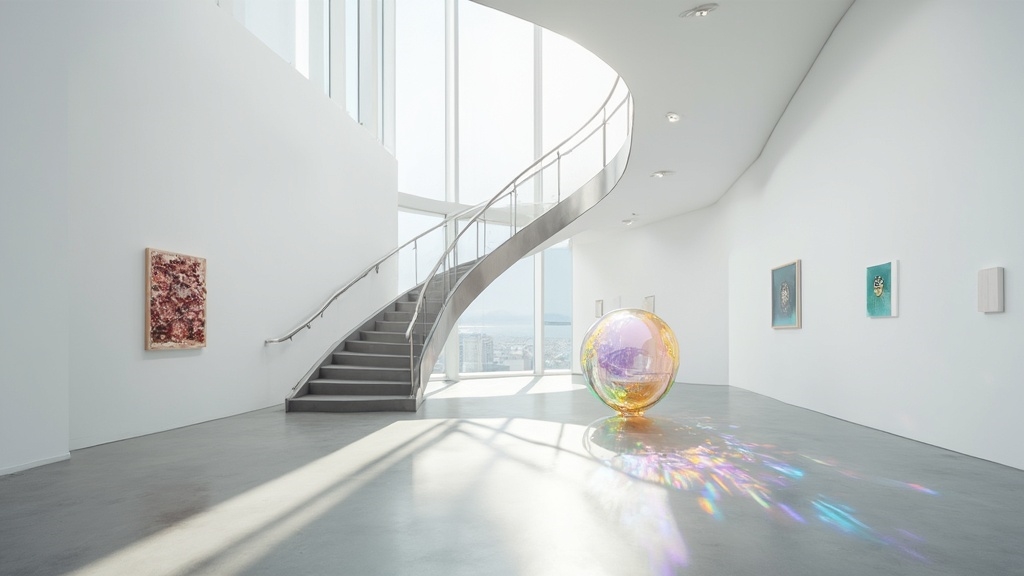
The museum’s distinct architectural design features slate roofs and Tokoname ceramic brick walls, creating an inviting atmosphere for art enthusiasts. Its spacious, single-story galleries provide an accessible environment for viewing both permanent collections and rotating exhibitions. Notable pieces include Takamura Kotaro’s “Sitting Naked Woman” sculpture, demonstrating the museum’s commitment to diverse artistic expressions. The facility expanded through the 1970s and 1980s with additional administration and studio buildings, enhancing its service to the art community. The Chiba Prefectural Museum showcases over 2,800 artworks in its collection, making it a significant location for cultural understanding. Visitors can explore tranquil walking trails around the lake at the Kawamura Memorial DIC Museum of Art. The museums throughout Chiba Prefecture offer experiences distinctly different from those in Tokyo and Kyoto, providing unique perspectives on Japanese art and culture.
Notable Permanent Collections
While featuring an extensive array of global artworks, Chiba Prefecture’s art museums have curated particularly significant permanent collections that span Western-style paintings, Japanese traditional art, and contemporary sculptures. Among the collection highlights are Millet’s “Sheeps Grazing by a Hedge” and works by Millais and Corot, representing European artistic themes. The museums showcase important Japanese pieces including Kaii Higashiyama’s “Spring Snow” and Nanso Takazawa’s calligraphy. Notable sculptures include Kotaro Takamura’s “Sitting Naked Woman” and Hotsuma Katori’s metalwork. The collections emphasize regional artistic heritage through works by local pioneers like Chū Asai and his followers. With over 1,500 pieces acquired since 1974, these institutions effectively blend Japanese traditions with international influences while maintaining strong ties to Chiba’s cultural identity. Additionally, the art in these museums often reflects the beauty of nature’s cycles, mirroring themes found in poetry highlighting environmental stewardship. The Hoki Museum stands out for its dedication to realism artworks, attracting visitors from across Japan. The Chiba City Museum of Art has earned recognition for its modern Japanese prints collection, particularly featuring woodblock prints that showcase the evolution of this traditional art form.
Architectural Design Features
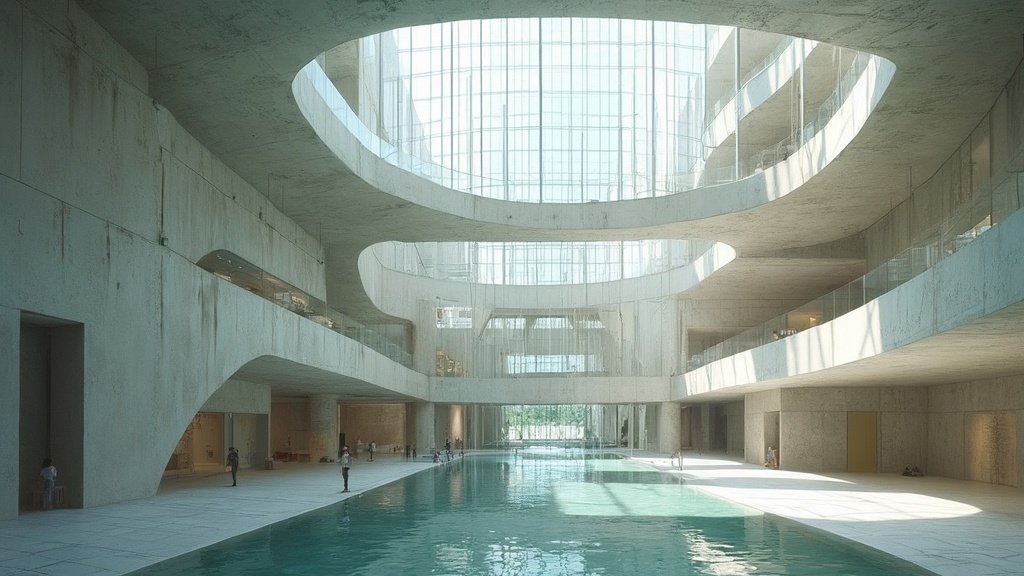
Integrating traditional Japanese aesthetics with modern architectural principles, art museums across Chiba Prefecture showcase distinctive design elements through their careful selection of materials and spatial layouts. Tokoname ceramic aesthetics dominate exterior walls at both the Chiba Prefectural Museum of Art and Hoki Museum, creating vibrant red facades that serve as artworks themselves. Many exhibition galleries are designed with below-ground spaces at depths of 5.5 meters, creating unique viewing environments. This thoughtful integration of local materials reflects the appreciation of global diversity that art embodies.
The spatial design of these institutions reflects thoughtful consideration for accessibility and visitor experience. Single-story structures with Hiraya-style layouts provide open gallery spaces, while strategic placement of colonnades and courtyards at locations like the Gotoh Museum blur the boundaries between indoor and outdoor spaces. Natural slate roofs with geometric lines complement the European-style brickwork found at Sakura City Museum of Art, demonstrating a harmonious blend of Eastern and Western architectural influences. The museums emphasize user-centered approaches in their design to ensure inclusive access for visitors of all abilities. At Makuhari Messe, the rolling mountains and wave crest designs of its two largest buildings symbolize the natural landscape.
Seasonal Exhibition Highlights
Museums across Chiba Prefecture maintain dynamic exhibition schedules that change with Japan’s distinct seasons, showcasing both permanent collections and rotating displays throughout the year. The exhibition themes reflect cultural heritage through contemporary artworks, featuring both local and international artists. Visitors can explore Japanese art history through the Chiba City Museum and its extensive collections of traditional and modern works. Exploring these artistic expressions can also enhance emotional resilience, providing visitors with new perspectives on culture and creativity.
- The Chiba City Museum of Art presents the 28th Biennial of Illustrations Bratislava, highlighting seasonal highlights in international illustration.
- Tezuka Osamu’s BLACK JACK exhibition demonstrates Japanese manga’s cultural influence.
- “From Exquisite Craftsmanship to Modern Expressions” explores the evolution of artistic techniques through different seasonal periods.
- The Hoki Museum’s collection of photorealistic paintings by Sosuke Morimoto and others captures seasonal changes through miniature artworks.
These rotating exhibitions complement the museums’ permanent collections of ukiyo-e prints, Barbizon school paintings, and contemporary Japanese art.
Museum Gardens and Landscapes
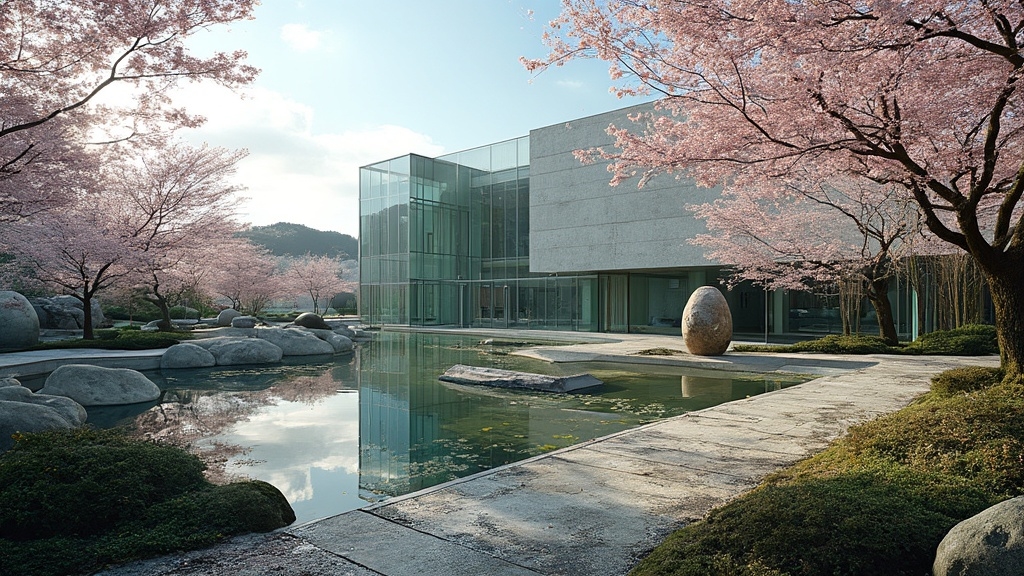
Beyond the exhibition halls, Chiba Prefecture’s art museums extend their artistic vision into carefully designed outdoor spaces. The Kawamura Memorial DIC Museum’s 30,000-square-meter grounds demonstrate thoughtful landscape design, featuring indigenous trees, nature trails, and a serene pond adorned with water lilies. The garden elements seamlessly integrate six outdoor sculptures within natural settings, creating dynamic interactions between art and environment. The museum’s architectural design by Ichiro Ebihara harmoniously blends with the surrounding landscape. The Sanyo Media Flower Museum adds to this landscape tradition with its indoor and outdoor gardens highlighting seasonal blooms. Engaging with locals during visits can also enhance appreciation for these vibrant spaces and their diverse ways of living.
Free admission to these grounds encourages community engagement and broader cultural participation. Walking paths guide visitors through pastoral landscapes where permanent installations take on different characters as weather and seasonal lighting change. The rolling terrain, with its grassed areas and gentle slopes, provides an immersive experience that enhances both the artistic collections and visitors’ connection to nature. Visitors can enjoy picnics and relaxation on the grass square while appreciating the outdoor artwork.
Accessibility and Transportation
Thoroughly addressing diverse visitor needs, Chiba Prefecture’s art museums maintain robust accessibility features and convenient transportation options. The facilities incorporate extensive accessibility services including wheelchair-accessible entrances, tactile guides for visual impairments, and companion access support. Financial accessibility measures guarantee equitable access through specialized fee structures and companion entry programs. Free admission is provided for seniors aged 65 and over, junior high and elementary school students, and persons with disability certificates plus one companion.
- Multi-format information resources with furigana-enhanced Japanese guides and bilingual signage
- Wheelchair-accessible facilities including restrooms and wide corridors
- Direct access via JR Keiyo Line and Chiba Toshi Monorail within 8-minute walks
- Designated parking facilities with barrier-free pathways to museum entrances
Transport options include convenient railway connections and highway access routes. Museums provide detailed directions and multiple entry points to accommodate visitors arriving through various modes of transportation.
Visitor Experience and Amenities
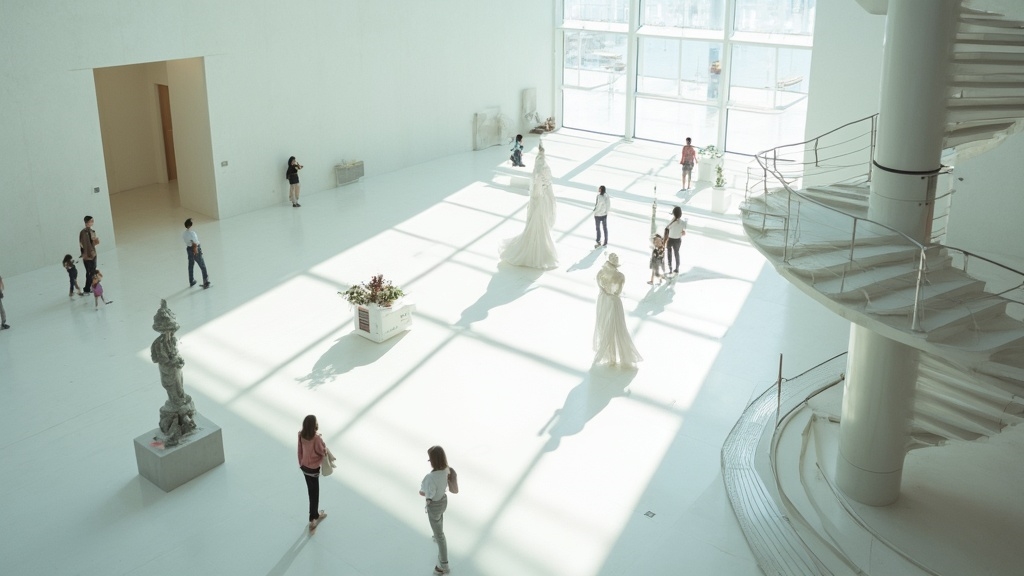
Chiba Prefecture’s art museums offer five distinct categories of visitor amenities to enhance the museum experience. Museums prioritize scenic environments through lakeside settings, sculpture gardens, and park integration, creating tranquil spaces for art appreciation. Exhibition offerings span local and international works, with rotating displays ensuring fresh visitor engagement throughout the year. On-site dining options include rooftop restaurants, basement bars featuring local sake, and casual cafes, allowing guests to complement their cultural experience with culinary delights. Interactive displays and educational facilities feature workshops, specialized libraries, and art therapy sessions. Family-oriented amenities accommodate diverse age groups through hands-on classes, while themed collections and dioramas cater to varying interests, ensuring meaningful experiences for all visitors. For aviation enthusiasts, the Museum of Aeronautical Science provides Boeing aircraft simulators that deliver an immersive pilot experience.
Cultural Events and Workshops
Building upon their commitment to enriching visitor experiences, art museums across Chiba Prefecture organize dynamic cultural events and educational workshops throughout the year. The museums foster cultural engagement through programs like the Chiba City Arts Triennale 2025 and Project Social Dive, which bring together local and international artists for community-focused initiatives. Artists receive up to 2 million JPY to create impactful community art projects. One notable workshop in Narashino offers handmade picture books that tap into visual storytelling traditions.
- Interactive workshops at facilities like “Nya ~ Topia” offer hands-on experiences in picture book creation for participants of all ages
- Artist residency programs provide opportunities for cultural exchange and artistic collaboration
- Community engagement initiatives connect residents with artists through exhibitions and speaking events
- Museum-supported activities showcase both contemporary and traditional art forms, emphasizing Chiba’s rich cultural heritage
The diverse programming reflects the prefecture’s dedication to making art accessible and meaningful for everyone in the community.
Art Conservation Facilities
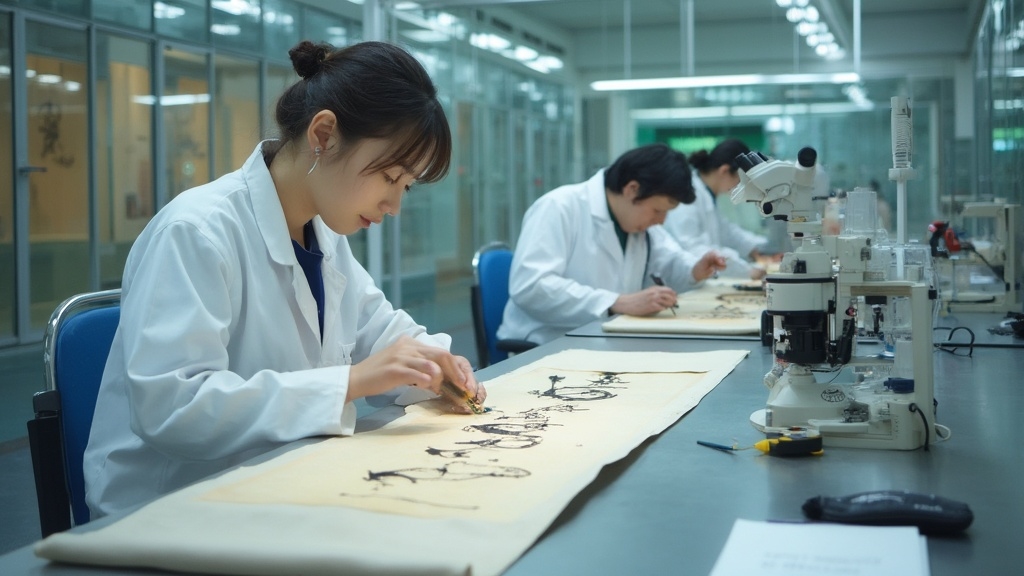
Among the prefecture’s cultural institutions, art conservation facilities stand as pioneers in preserving Japan’s artistic heritage through advanced techniques and specialized infrastructure. The Hoki Museum exemplifies excellence in art preservation through its state-of-the-art methods for protecting photorealistic miniature paintings, supported by collaborations with artists like Sosuke Morimoto. Meanwhile, the Chiba Prefectural Museum implements thorough conservation techniques across various mediums, from paintings to calligraphy. Both institutions maintain climate-controlled environments essential for artwork longevity. The Kawamura Memorial DIC Museum enriches the region’s artistic landscape with its comprehensive preservation protocols. The facilities’ commitment to preservation extends to specialized treatments for delicate pieces, such as the intricate restoration of ukiyoe woodblock prints. The Hoki Museum’s award-winning architecture further demonstrates how modern design can enhance conservation efforts through purpose-built spaces. Similar to how research proposals require clear problem statements, these facilities explicitly define their preservation objectives to ensure proper artwork conservation.
Museum Shopping and Dining Options
The cultural experience at Chiba Prefecture’s art museums extends beyond gallery spaces to encompass diverse dining and retail offerings. The Kawamura Memorial DIC Museum of Art invites visitors to dine while taking in views of its 30-hectare grounds. Visitors can explore sophisticated museum cafes and fine dining establishments while enjoying their artistic pursuits. The region’s art institutions thoughtfully combine culinary and retail experiences with cultural appreciation. The museum enhances visitor engagement through its See, Learn, and Create program for schools, adding an educational dimension to the experience.
- The Chiba City Museum of Art features an elegant Italian restaurant and café, providing refined refreshments between exhibition viewings
- Hoki Museum’s restaurant offers scenic garden views, creating a tranquil dining atmosphere
- The Sayado Hall incorporates both café and dining facilities for convenient refreshment options
- Shopping opportunities abound along the Around Kazusa Arc course, which connects to major retail centers and specialty museum shops, allowing visitors to discover artistic merchandise and souvenirs
Frequently Asked Questions
Which Chiba Art Museum Has the Best Children’s Educational Programs?
Chiba City Museum of Art offers engaging children’s workshops and interactive exhibits, though specific program details are limited. Contact the museum directly for current educational offerings and schedules.
Do Any Museums Offer Artist-In-Residence Opportunities for International Creators?
Research indicates no confirmed artist-in-residence programs for international artists at Chiba museums. Interested creators should explore alternatives through local arts councils or Tokyo-based cultural institutions offering established residency programs.
What Photography Policies Exist for Personal Use Inside the Museums?
Sharp as a tack, museum staff policies generally restrict photographing exhibits. Personal photography varies by venue, with flash typically prohibited and special permissions needed for certain collections or temporary displays.
Are There Special Museum Passes That Combine Entry to Multiple Locations?
Several museums offer combined admission through the Grutto Pass, providing museum discounts across multiple locations. ICOM membership benefits include free entry and reduced rates at participating cultural institutions.
Which Museums Host Regular Art Therapy or Wellness-Focused Creative Sessions?
Like hidden gems waiting to be discovered, formal art wellness programs remain undocumented at these museums, though natural spaces and contemplative galleries offer opportunities for creative healing through self-guided exploration.
Conclusion
Chiba Prefecture’s art museums stand as colossal temples of creativity, housing millions of masterpieces that span centuries of human expression. From the towering glass facades that pierce the sky to the sprawling sculpture gardens that stretch endlessly, these cultural giants offer an absolutely overwhelming feast for art enthusiasts. With their monumental collections, world-class facilities, and endless programming, they transform Chiba into an unrivaled epicenter of artistic excellence in Eastern Japan.
